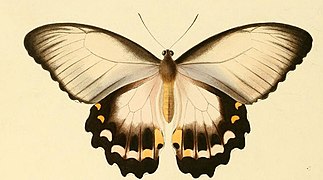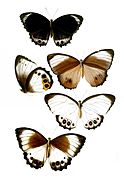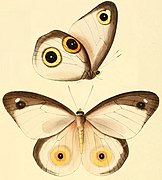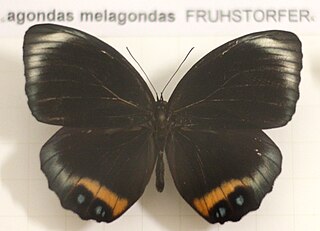| Taenaris | |
|---|---|
 | |
| Taenaris artemis | |
| Scientific classification | |
| Domain: | Eukaryota |
| Kingdom: | Animalia |
| Phylum: | Arthropoda |
| Class: | Insecta |
| Order: | Lepidoptera |
| Family: | Nymphalidae |
| Tribe: | Amathusiini |
| Genus: | Taenaris Hübner, 1819 [1] |
| Type species | |
| Papilio urania Linnaeus, 1758 | |
| Synonyms | |
| |
Taenaris is a genus of butterflies in the family Nymphalidae, subfamily Amathusiinae, that distributed throughout Australasia with a majority of species being located on the island of New Guinea. They are commonly known as the owl butterflies. [2]
Contents
Taenaris are showy medium to large butterflies with predominantly white wings often featuring extensive patches of black, gray, or tan coloration. They are best known for their rounded hindwings which feature well developed eyespots, most of which are yellow in color with blue-black "pupils". [2] Due to their larval diet consisting of toxic cycasin-rich foodplants, many members of genus are involved within Müllerian mimicry complexes.













